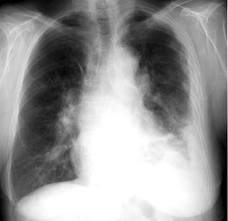Asbestos siding was very commonly used in buildings and homes from around the 1920s until the 1980s, and can still be found in many older homes in the U.S. and Canada.
 Asbestos siding was made by adding asbestos — a naturally occurring mineral — to Portland cement. That cement was then pressed into siding shingles that came in a wide variety of sizes, profiles, and textures.
Asbestos siding was made by adding asbestos — a naturally occurring mineral — to Portland cement. That cement was then pressed into siding shingles that came in a wide variety of sizes, profiles, and textures.
The resulting product was very durable, fire-resistant, and absorbed paint well. It also can be extremely dangerous if the siding is broken up and asbestos fibers are released into the air.
Asbestos siding was relatively cheap to manufacture and was very durable and resistant to the elements.
It was easy to clean and paint adhered to it very easily, making maintenance and upkeep costs low.
Asbestos was added to the cement because of its fire-retardant properties, as well as to add strength and durability to the siding shingles, as well as insulating capacity.
Asbestos Health Concerns
Unfortunately, though, there was a lurking problem with asbestos that took decades to confirm: those same asbestos fibers that were being added could cause cancer if they became airborne and were inhaled.

Mesothelioma and other asbestos-related cancers continue to impact millions in the U.S. and around the world.
It wasn’t until 1989 that the EPA banned the us of asbestos in the U.S. in new building products. This means that millions of homes in the U.S. built prior to that date likely contain asbestos in some form.
One thing that should be noted is that when asbestos fibers are inert, intact, and encapsulated in cement siding (as is most often the case), it poses absolutely no health risk.
The Expense comes if the home is demolished or renovated, the Siding will have to be remediated.
Also view
https://www.asbestossiding.org/
https://www.thespruce.com/cement-asbestos-siding-concerns-1821956
https://inspectapedia.com/exterior/Asbestos_Cement_Shingle_Repair.php
